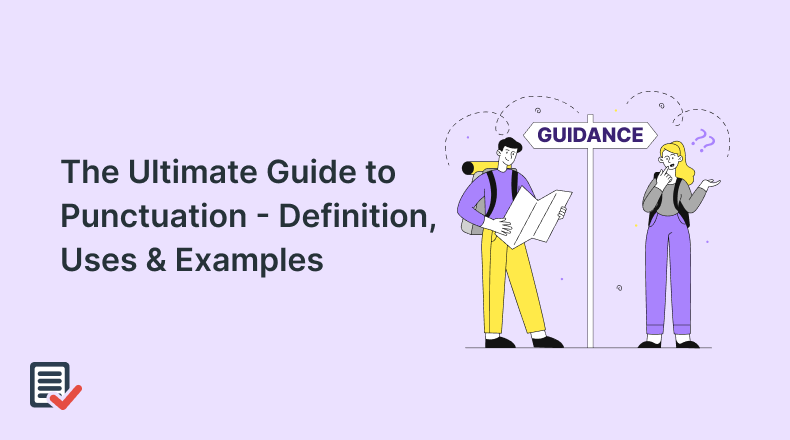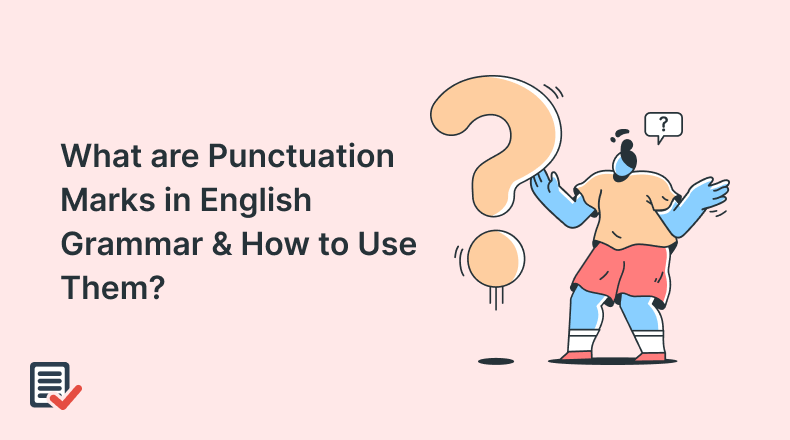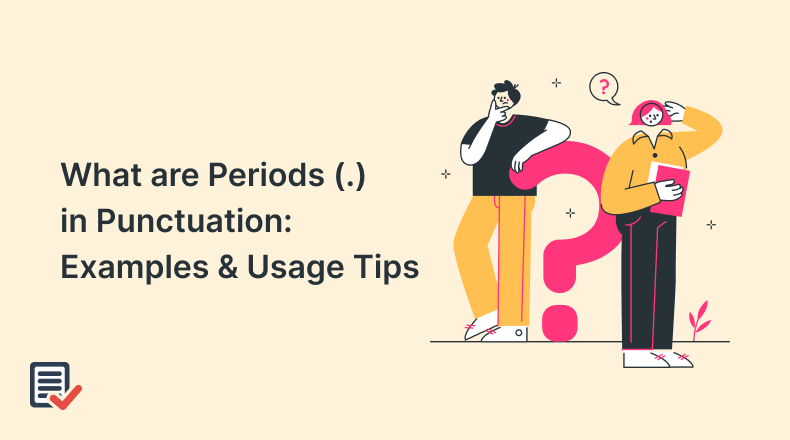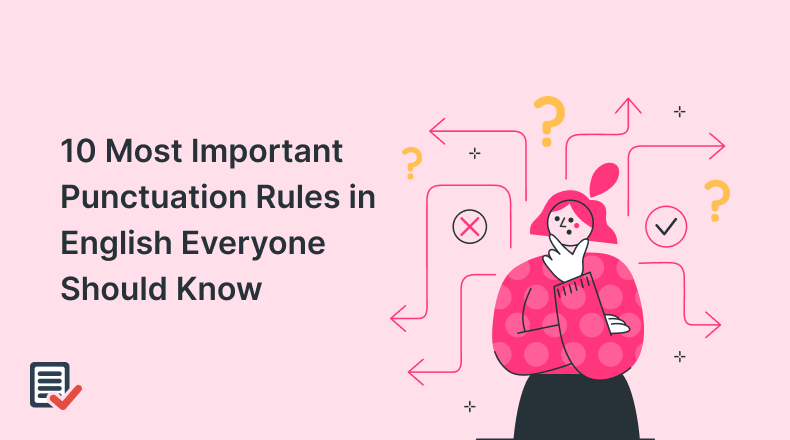
Writing is pretty easy, but it is always the punctuation that makes everything complex. For example, without proper punctuation, the sentence let’s eat, grandma becomes let’s eat, grandma!
Punctuation and grammar play a very important role in written communication. They not only form the foundation of any written text but also play a crucial role in clarifying meanings and enhancing readability.
Even ancient and modern versions of the same language were entirely different. However, the only constant factor was the ground rules. These principles begin with punctuation. If you’re new to learning the English language – or really just looking to understand what punctuation marks are and how to use them – this blog post has got you covered.
What is Punctuation?
By its definition, punctuation is a set of symbols and marks used in writing to give necessary structure and organize content. Punctuation separates sentences and indicates where a pause or intonation occurs.
More than speaking, punctuation is an essential element in clarifying meanings, highlighting the break, and setting the tone.
In ancient times, languages like Greek and Latin had little to no punctuation, making it impossible for them to be read aloud. With the passage of time, punctuation marks became absolutely necessary as literacy grew and written information became common. From period to semicolon and exclamation mark, there are numerous punctuation symbols in the English language. Before jumping to these marks, let’s understand their types first.
Types of Punctuation Marks
Punctuation symbols have different purposes in writing. Based on their characteristics and roles, there are four categories of punctuation symbols:
End Punctuation: These include periods (.), question marks (?), and exclamation points (!), indicating the end of a sentence.
Pauses: To separate ideas within a sentence, commas (,) and semicolons (;) are used.
Connectors: These include colons (:), dashes (—), and hyphens (-), which show related ideas or elements.
Subject Based: These symbols include quotation marks (” “) indicating speech texts and apostrophes (‘) used for possession or forming contractions.
1. Periods (.)
Period (.), also called a full stop, is denoted by a small dot. This symbol is used to indicate that a declarative sentence has ended. A period serves as a visual sign for a reader to understand the previous sentence before moving on to the next one.
Without a period, written communication would be incomprehensible as readers would not be able to distinguish between separate thoughts. A period is also used in abbreviations to make the language precise.
Examples:
Period as End Punctuation:
The county fair had seen more people than last year. With more opportunities to make money on the side, many people participated.
Note: These sentences are two different scenarios related to the same topic. The use of a period allows the reader to take a pause and comprehend before moving forward.
2. Commas (,)
Sentences can usually have different elements that need to be separated for a clear understanding. That’s where commas are used. Commas tend to distinguish between the subjects without having any impact on the sentence overall.
In the case of grammar, commas can change the structure if they are used incorrectly. Another factor to note is the use of Oxford Comma. Oxford Comma is placed before a conjunction. It is a standard practice in American English but not used as often in British English.
Examples:
Comma as Pause:
“Sally brought a bunch of green apples, peeled oranges, and bananas for the picnic.”
Notice how the use of commas created a list of the fruits brought by Sally in the sentence without ending the sentence or creating confusion.
Comma as Comma Splice:
Incorrect: “Samantha loves painting, George prefers drawing.”
Correct: “Samantha loves painting, but George loves drawing.”
Comma as Oxford Comma:
American English: “Sally brought a bunch of green apples, peeled oranges, and bananas for the picnic.”
British English: “Sally brought a bunch of green apples, peeled oranges, and bananas for the picnic.”
3. Exclamation Marks (!)
An exclamation mark is a punctuation symbol used to convey strong emotions. It is placed at the end of a sentence or interjection.
Example:
“Hurry up!” “This is the best trip ever!” “Wow!”
4. Question Marks (?)
As the name suggests, question marks are punctuation symbols used at the end of interrogative sentences. However, using a question mark in indirect questions is incorrect.x
Example:
“What time is the flight leaving for Australia?”
5. Colons (:) and Semicolons (;)
A colon is used to introduce further explanations or lists. Colons come after a complete sentence. A semi-colon connects closely related sentences or separates different elements when commas are already used.
Example:
Colon: He only had one goal: to win her heart.
Semi-colon: We will go to New York this year; afterward, we will visit Grandma, and then continue visiting other places for vacation.
6. Quotation Marks (” “)
As the name suggests, quotation marks indicate the use of speech and references from other sources. There are two types of quotation marks: single (‘) and double (“).
Example:
A direct speech: “Once I win the elections, no woman shall feel unsafe,” promised the Mayor.
As reference: “The storms this year have been heavier and more destructive,” XYZ News reported.
As Titles: I loved Katherine Mansfield’s “The Doll House”
7. Apostrophes (‘)
An apostrophe is a punctuation mark that changes its principles and rules depending on the context of its use. Apostrophes are used to show possession, in contractions of forms, and pluralization of numbers or symbols.
Examples:
Possession: Johnny’s mansion
Contraction: It’s, don’t, won’t, couldn’t
Pluralization: When solving algebra, mind your x’s and y’s.
8. Parentheses ( ) and Brackets [ ]
Parentheses is a punctuation mark symbolized by curved brackets. Parentheses allow additional information or clarification to be added without disrupting the sentence. This information in the parentheses is relevant but not essential.
Brackets are used for enclosed information within a quotation and can also be used in editorial comments.
Examples:
Parentheses: “Julia loves dogs (especially Labradors).”
Brackets: The reporter stated, “She [the supervisor] was present at the scene.”
9. Hyphens (-) and Dashes (–/—)
Hyphens and Dashes are pretty much the same in visuals, except that the former is shorter than the latter. Hyphens are used to join two words to make a compound word or split a word at the end of a sentence to begin from the new line.
A dash is used in two ways: en dash and em dash. En Dash is typically used in ranges, while Em Dash is used to create a backstory or add information that, even if omitted, doesn’t affect the sentence.
The easiest way to remember is that hyphens are used for compound words, while dashes are used for breaks in thought. The Most common mistake made while writing is the incorrect use of hyphens and dashes, possibly due to typing errors.
Examples:
- Hyphen: Used to bridge two words to make another: “Time-efficient”
- Em Dash: Used in a sentence to add more depth: “Lana had reached there—right on the dot!”
En Dash: 10-12 Years







